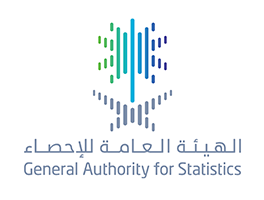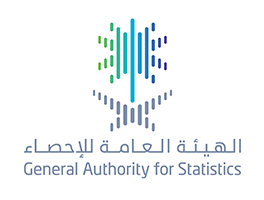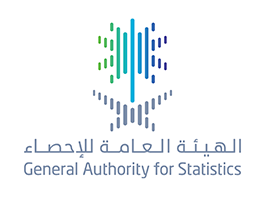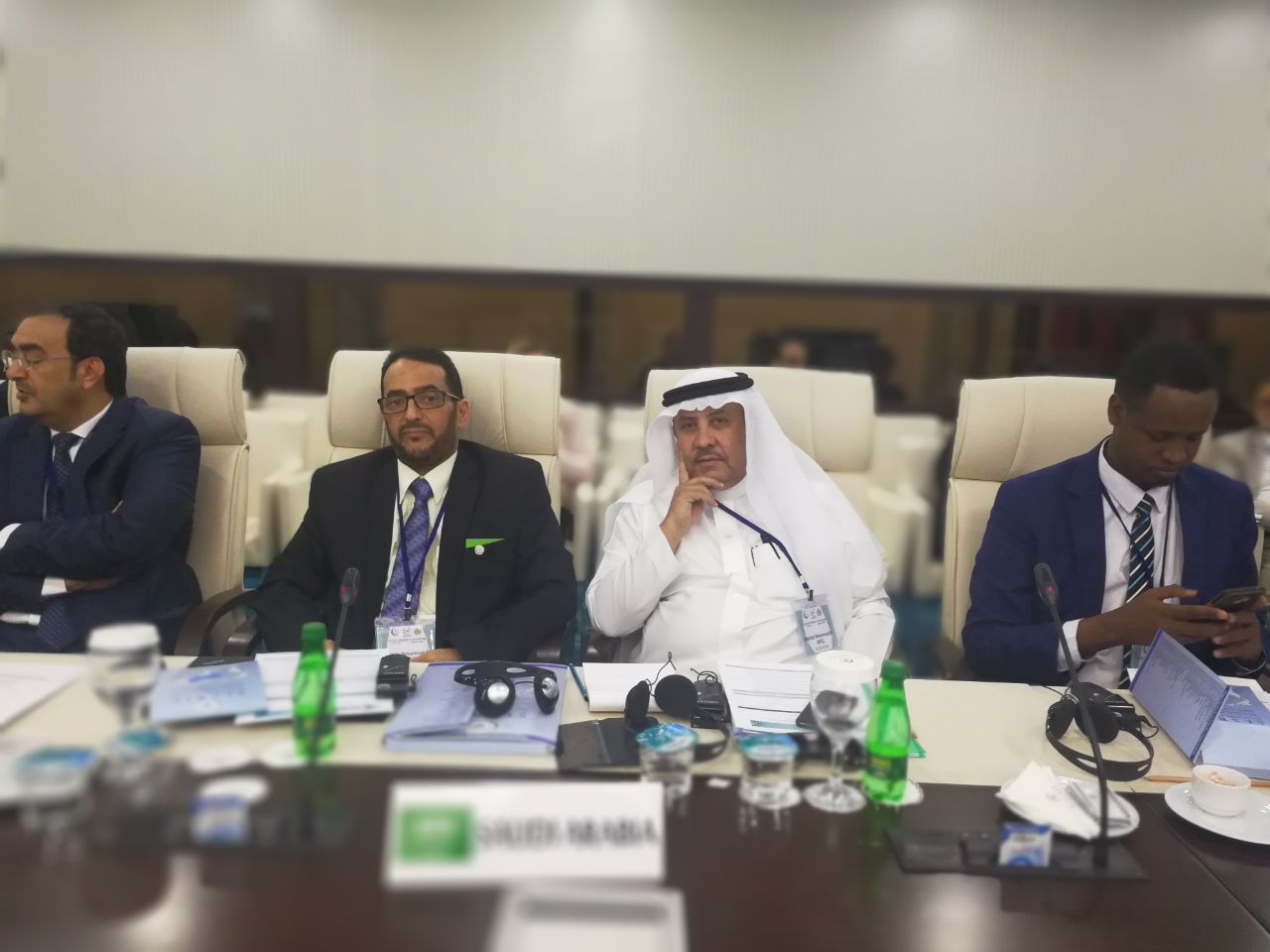
الهيئة العامة للإحصاء تصدر النسخة 53 من الكتاب الإحصائي السنوي 2017م
It includes 20 chapters and data of more than 50 governmental entities
GASTAT releases the 53rd edition of the Statistical Yearbook (2017)
GASTAT released the (53rd) edition of the Statistical Yearbook for 1438/1439 H (2017). It is one of the most important statistical products released by GASTAT to monitor and document statistical data and information, also to shed light on the activities of the governmental bodies and the private sector as well.
Additionally, it reflects the growth rates from year to year and the improvement in the economic, social and population fields. The Statistical Yearbook aims to provide statistical data and information to businessmen, companies, planners, researchers and to the public too. Moreover, it accurately indicates the dimensions of the comprehensive development that were achieved by the Kingdom.
The Statistical Yearbook includes 20 chapters and over 300 tables that contain updated information which were added to improve the display and the documentation of statistical indicators and data. It covers the most significant data and information for different development sectors as well as the main results of the statistical works carried out by GASTAT during the year, also the data received from different statistical departments of more than 50 governmental and private sectors.
Moreover, it includes data about: population and vital characteristic, housing and real-estate, health, training and education, agriculture, water and environment, culture and information, internal trade, social development and services, money, insurance and prices, administrative services, labor market, industry, domestic product and household expenditure, transportation, technology and communication, Islamic affairs, Hajj and Umrah, tourism , entertainment and sport, energy, economic establishments, and data on the budget.
The Statistical Yearbook is not limited to a certain category, for example, the population and vital characteristics chapter is considered one of the significant chapters that includes useful data to conduct a research or to build indicators related to population; and through this, many development requirements can be achieved in all cities and governorates. On the other hand, policy planners and decision makers can benefit from the training and education chapter, the private sector can prepare necessary plans as well to establish more educational institutions. In addition, these data are useful for planners and those who are interested in regulating the labor market.
The social development and services chapter is important for citizens in which it shows the services provided by them. Additionally, this chapter is also useful to social researchers in which it helps them to conduct researches and studies related to social issues.
The findings of the labor market and the social protection’s chapter are very important to prepare plans to regulate the labor market and to find the right solutions. Furthermore, they can be used to conduct economic researches by economists and researches who are interested in this.
Money, insurance and prices chapter can serve a large number of researchers in the economic field to conduct studies that show the inflation rates and the consumption patterns of the population and other indicators.
It is worth mentioning that the first edition of the book was released in 1385 H (1965) and GASTAT usually prepares its chapters based on two main sources: the results of the researches and the field studies carried out by GASTAT and the statistical data received from different statistical departments from various governmental bodies.

الهيئة العامة للإحصاء: 83.83٪ من إجمالي الأفراد الذين تتراوح أعمارهم من 12 إلى 65 سنة يستخدمون الإنترنت و92٪ يستخدمون الهاتف المتنقل
According to the results of households and individuals’ ICT access and usage survey 2017
GASTAT: 83.83% of individuals (12 to 65 years) use internet, and 92% use cell phone
On Thursday 24th of Sha’aban 1439 H corresponding 10th of May 2018, the General Authority for Statistics has released the report of households and individuals’ ICT access and usage survey results 2017. This report aims at providing recent data and indicators about the communication and information technology activity, which helps decision makers in obtaining necessary statistical data. In addition, it helps in founding a wide range data base that can be used as a reliable reference for ICT activity’ studies and research. It also provides researchers and students with statistical data about the households and individuals ICT activity, so that they can use it in their scientific studies and research that contribute in developing this activity in Saudi Arabia. Not to mention its role in making local, regional, and international comparisons in the households and individuals ICT activity.
Based on the survey results, the percentage of households who can access the internet reached 86.8%. however, households who have fixed phone in their dwellings registered 24.74%. on the other hand, individuals who use the internet recorded 68.13% of total Saudi population, whereas 83.83% of individuals whose ages range between (12 and 65 years) use the internet. As for cell phones, the percentage of individuals who use cell phones is 73.28% of total Saudi population. 91% of individuals whose ages range between (12 and 65 years) use cell phones.
According to the results of this survey, the percentage of households who have a computer in their dwellings reached 46.6% of total Saudi population. However, individuals who use computers registered 24.69%, whereas 30% of total individuals whose ages range between (12 and 65 years) use computers. As for the percentage of households who have a television, they registered 92.67% of total Saudi population.

الهيئة العامة للإحصاء تُجري (12) عملاً إحصائياً ميدانياً تستمر حتى مطلع شهر رمضان
Targeting (57350 households) and (33450 establishments)
GASTAT conducts (12) statistical works that last until the beginning of Ramadan
The General Authority for Statistics (GASTAT) has asked all citizens and residents whether individuals or institutions to cooperate with its statisticians who work in the field all over Saudi Arabia, and their work would last until the beginning of Ramadan. GASTAT asserted that all data are dealt with as an information base that developmental decision makers, who work in all related governmental entities, would rely on.
GASTAT spokesman, Mr. Taiseer Almofarrej said that (11317) statisticians are conducting (12) statistical research and surveys in many economic and social fields, and their works will last until the second of Ramadan. These statistical works are targeting (57350 households) and (33450 establishments) in all (13) administrative regions including all cities and governorates.
The results of these works represent a base for making the related developmental decisions. On the level of statistical works that target households, GASTAT is currently conducting the households and individuals’ ICT access and usage survey 2018, the household and population characteristics survey 2018, and the labor force survey, Q2 of 2018.
On the other hand, Almofarrej clarified that the general statistics system issued by the ministers’ cabinet, all data and information provided by any citizen, resident, or establishment are kept and dealt with confidentiality. He added that the people’s cooperation with statisticians would guarantee the success of these works, and using them in supporting economic and social development accordingly.
It is worth mentioning that GASTAT is following certified international standards in choosing the sample of these works. Thus, GASTAT asks all individuals in the statistical society, either households or establishments, to cooperate with the statistician who can be identified by his official card. In addition, there is a communication center that everyone contacts on 920020081

الهيئة العامة للاحصاء تشارك في الدورة السابعة للجنة الإحصائية لمنظمة التعاون الاسلامي
GASTAT participates in the seventh round of OIC-StatCom
The General Authority for Statistics (GASTAT) participates in the meetings of the seventh round of the Organization of Islamic Cooperation Statistical Commission (OIC-StatCom), which are held in Ankara- Turkey, during the period 2-3 May, 2018, corresponding 16-17 Shaaban, 1439H. On the first day of the meetings, the director- general of Methodologies and Statistical Classifications has presented in details how to use administrative records and vital statistics in the next population census which will be conducted in 2020. On the other hand, the vice president for Statistical Works has met the director- general of Statistical, Economic, and Social Research and Training Center for Islamic Countries (SESRIC),
Ambassador Musa KulaKlikaya. During their meeting, they shed light on GASTAT statistical transformation experience, and how can they reflect the experience of Saudi Arabia on other Islamic countries. Moreover, the vice president, and on behalf of all GASTAT staff, has expressed his thanks and gratitude for all the efforts exerted by the center. He assured that the authority can always provide support in different statistical fields. In the end, the center’s director-general has thanked the authority for their initiative, and expressed the center’s desire to sign a memorandum of understanding with GASTAT in the field of statistics.
